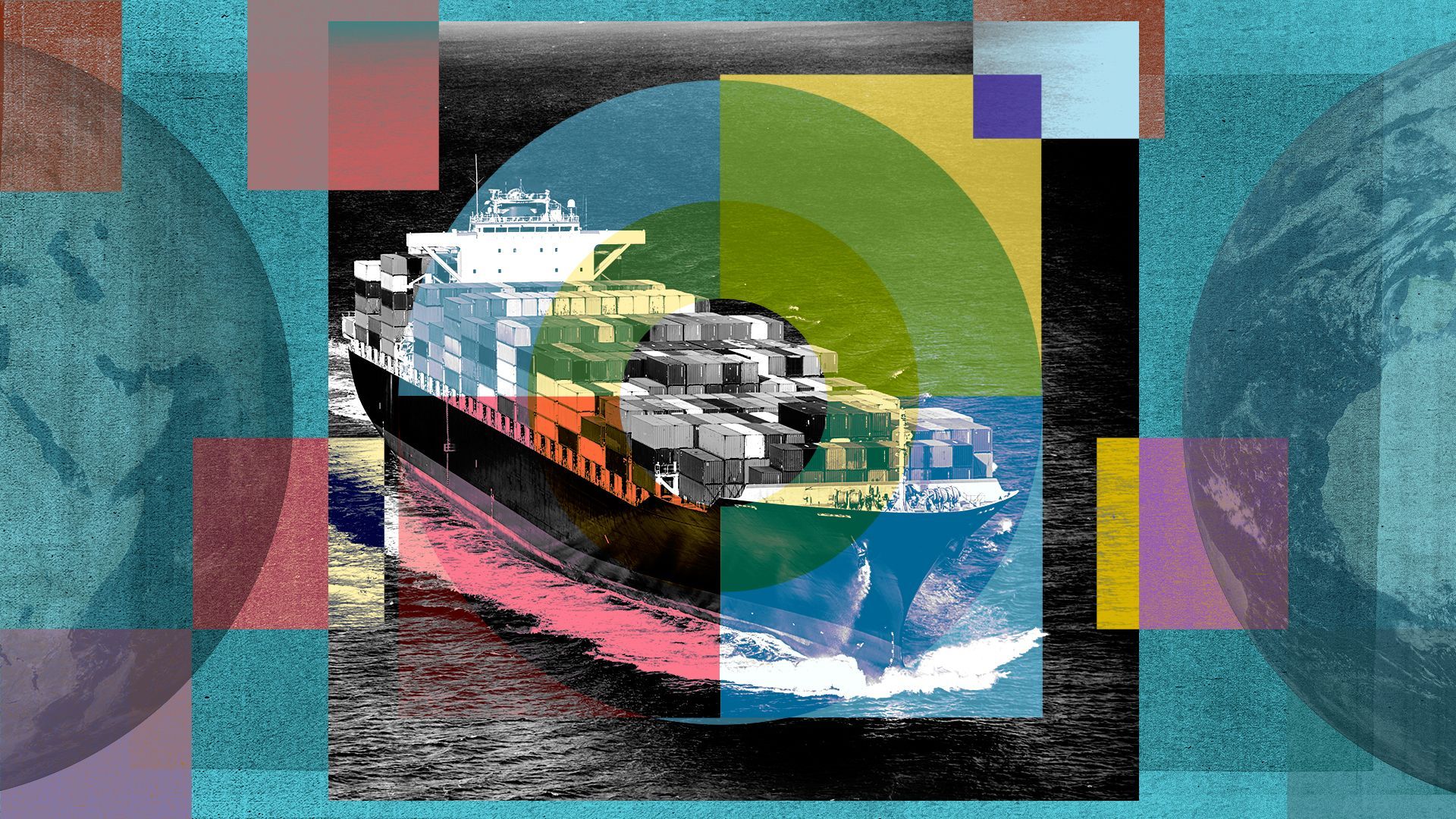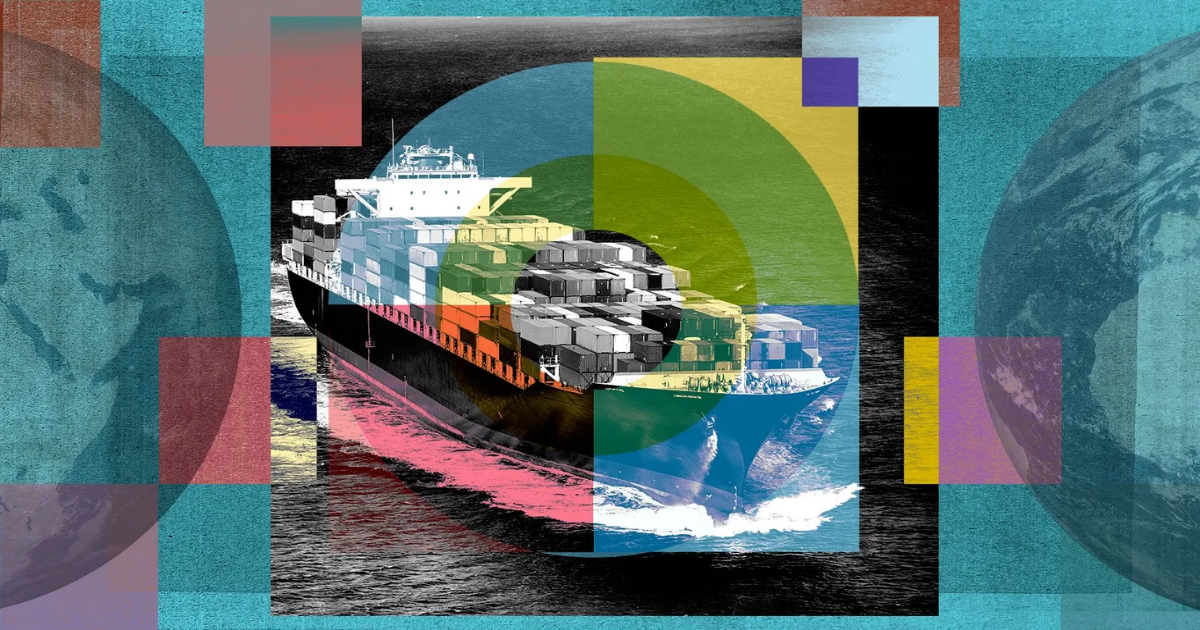
There is no port in the storm. That is the reality multinational American businesses face as they await President Trump’s “Liberation Day” of sweeping new tariffs to be announced Wednesday.
Why it matters: The administration’s presumed tariffs approach this week — with high import duties on pretty much all goods from pretty much all trade partners — leaves Corporate America with few good options to shift around supply chains.
- It contrasts with the 2018-2019 period in Trump’s previous term, when tariffs were more targeted to specific items from specific countries, and businesses had space to plead their case for carve-outs.
- Moreover, all signs are that these “reciprocal tariffs,” meant to penalize other nations seen as dealing unfairly, will be stacked on top of other tariffs, like those ostensibly meant to penalize Mexico, Canada and China for not stopping fentanyl smuggling.
Driving the news: “You’d start with all countries,” Trump told reporters Sunday on Air Force One, after a reporter asked whether this week’s tariffs would only apply to 10 or 15 countries with which the U.S. has particularly large trade deficits.
- White House trade adviser Peter Navarro said on Fox News yesterday that the new tariffs would raise $600 billion a year for the federal government.
By the numbers: In 2024, total tariff revenue was $77 billion.
- Navarro’s comments imply $6 trillion in increased tariff revenue over the next decade, which is four times the $1.5 trillion estimated tally for Trump’s signature 2017 tax cuts.
What they’re saying: “In 2018, tariffs were relatively targeted to certain geographies, certain types of products, and with quite a few exceptions that came into play,” said Liz Hempel, a partner at McKinsey & Company who advises large companies on their supply chains, tells Axios.
- “The tariffs now are much more broad in terms of scope, both in terms of products and countries,” she adds.
State of play: Tariffs in the previous Trump term, for example, heavily focused on China. That meant employers had more options to reroute their supply chains and avoid import taxes, such as relocating production activity to Vietnam or Mexico.
- While the details matter, and the administration’s announcement could target different countries with different rates, the prospect of broadly applied import taxes limits that room to maneuver.
Between the lines: That means importers face several flawed options.
- They can raise prices, hoping that doing so doesn’t destroy too much demand.
- They can absorb the higher tariffs in the form of lower profit margins, which may hammer their stock price but keep customers (and the White House) happy. In low-margin businesses, it may be impossible without incurring losses.
- They can try to foist the costs off to suppliers. Their ability to do so would depend on market power on each side — who needs whom more.
- They can re-shore production activity to the United States, which can take two years or more, given the complexities of building out new manufacturing capacity.
“It’s very industry dependent” how companies will respond, Hempel says. “You think about some industries, like mining, you can’t really lift up and move a mine. The minerals are where they are in the ground, and you need to either absorb it in your margin or pass it through.
- “You’ve got other industries where they’re quite a bit more mobile,” she says. “But I think most organizations are realizing they’re somewhere in between.”
